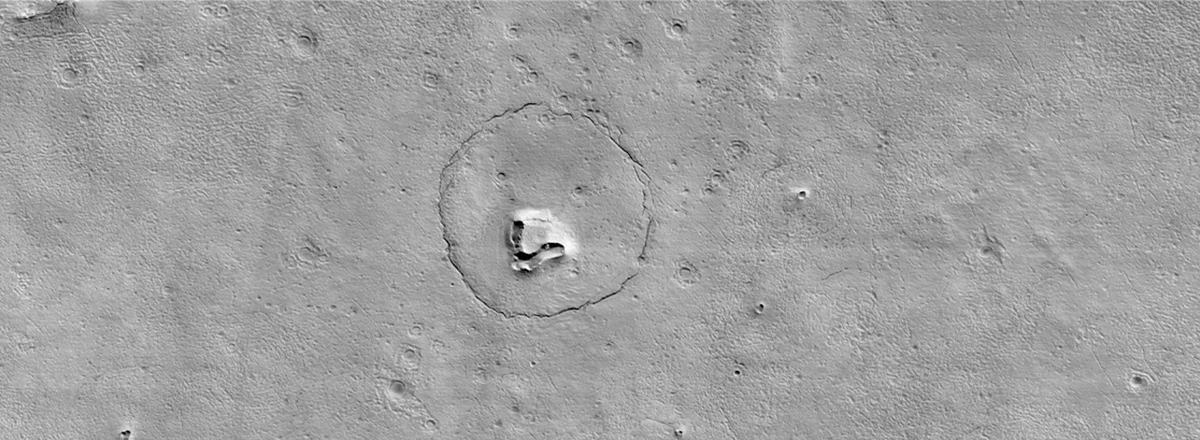NASA's HiRISE Captures an Image of a Bear's Face on Mars
The circular fracture pattern could have been caused by sediment over a buried impact crater. The nose could have been formed by a volcanic or mud vent.

Scientists operating NASA's Mars Reconnaissance Orbiter, a spacecraft that studies the surface and atmosphere of Mars, have discovered an unusual formation on the surface of Mars, which resembles the face of a bear.
The image was captured by the powerful on-board High Resolution Imaging Experiment (HiRISE) camera.
According to experts, it was formed due to volcanic or mud vents. "There's a hill with a V-shaped collapse structure (the nose), two craters (the eyes), and a circular fracture pattern (the head)," the scientists explained.
The circular fracture pattern could have been caused by sediment over a buried impact crater. The nose could have been formed by a volcanic or mud vent.

